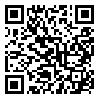Mazandaran University of Medical Sciences, Sari, Iran , dr.parisasaberi@gmail.com
Abstract: (522 Views)
Background: Despite advances in diabetes-related treatments, the effects of the disease have not yet been adequately reversed or prevented in patients.
Methods: In this study, type 1 diabetes mice models was established using multiple low-dose alloxan, and the diabetic mice were treated with three doses of dimethyl fumarate (DMF) i.e low, medium, and high viz. 20, 40 and 80 mg/kg, respectively for a period of 21 days. Then, specific test were done to evaluate blood biochemical parameters, oxidative stress markers, inflammatory genes expression, and histopathological changes in the mice kidney and liver.
Findings: The obtained results showed remarkably improved anti-diabetic, hepato-renal-protective, and oxidative stress indexes of DMF in alloxan-induced diabetic mice (p< 0.001). Treated mice with DMF demonstrated a noteworthy decrease in blood glucose levels when compared with diabetic group (p< 0.001). On the contrary, the histological features of the treated mice with DMF improve as shown by normal size of glomerular capillaries along with decrease in less dilatation of ducts in comparison with diabetic mice. The real-time quantitative PCR results indicated that DMF injection decreased the alloxan-induced increase of significant elevations in mRNA levels of pro-inflammatory cytokines levels in both kidney and liver tissues. Meanwhile, mice treated with DMF showed an increase in Sirt1 and Nrf2 expression in comparison to diabetic group.
Conclusion: In conclusion, it can be concluded that DMF treatment provides hepato-renal protective effects on alloxan-induced diabetic mice model by attenuating ROS inflammatory pathways.
Methods: In this study, type 1 diabetes mice models was established using multiple low-dose alloxan, and the diabetic mice were treated with three doses of dimethyl fumarate (DMF) i.e low, medium, and high viz. 20, 40 and 80 mg/kg, respectively for a period of 21 days. Then, specific test were done to evaluate blood biochemical parameters, oxidative stress markers, inflammatory genes expression, and histopathological changes in the mice kidney and liver.
Findings: The obtained results showed remarkably improved anti-diabetic, hepato-renal-protective, and oxidative stress indexes of DMF in alloxan-induced diabetic mice (p< 0.001). Treated mice with DMF demonstrated a noteworthy decrease in blood glucose levels when compared with diabetic group (p< 0.001). On the contrary, the histological features of the treated mice with DMF improve as shown by normal size of glomerular capillaries along with decrease in less dilatation of ducts in comparison with diabetic mice. The real-time quantitative PCR results indicated that DMF injection decreased the alloxan-induced increase of significant elevations in mRNA levels of pro-inflammatory cytokines levels in both kidney and liver tissues. Meanwhile, mice treated with DMF showed an increase in Sirt1 and Nrf2 expression in comparison to diabetic group.
Conclusion: In conclusion, it can be concluded that DMF treatment provides hepato-renal protective effects on alloxan-induced diabetic mice model by attenuating ROS inflammatory pathways.
Article number: 13
Keywords: Diabetes, Alloxan, Dimethyl fumarate, Oxidative stress, Anti-inflammatory responses, Hepato-renal-protective effects.
Send email to the article author
| Rights and permissions | |
 |
This work is licensed under a Creative Commons Attribution-NonCommercial 4.0 International License. |






